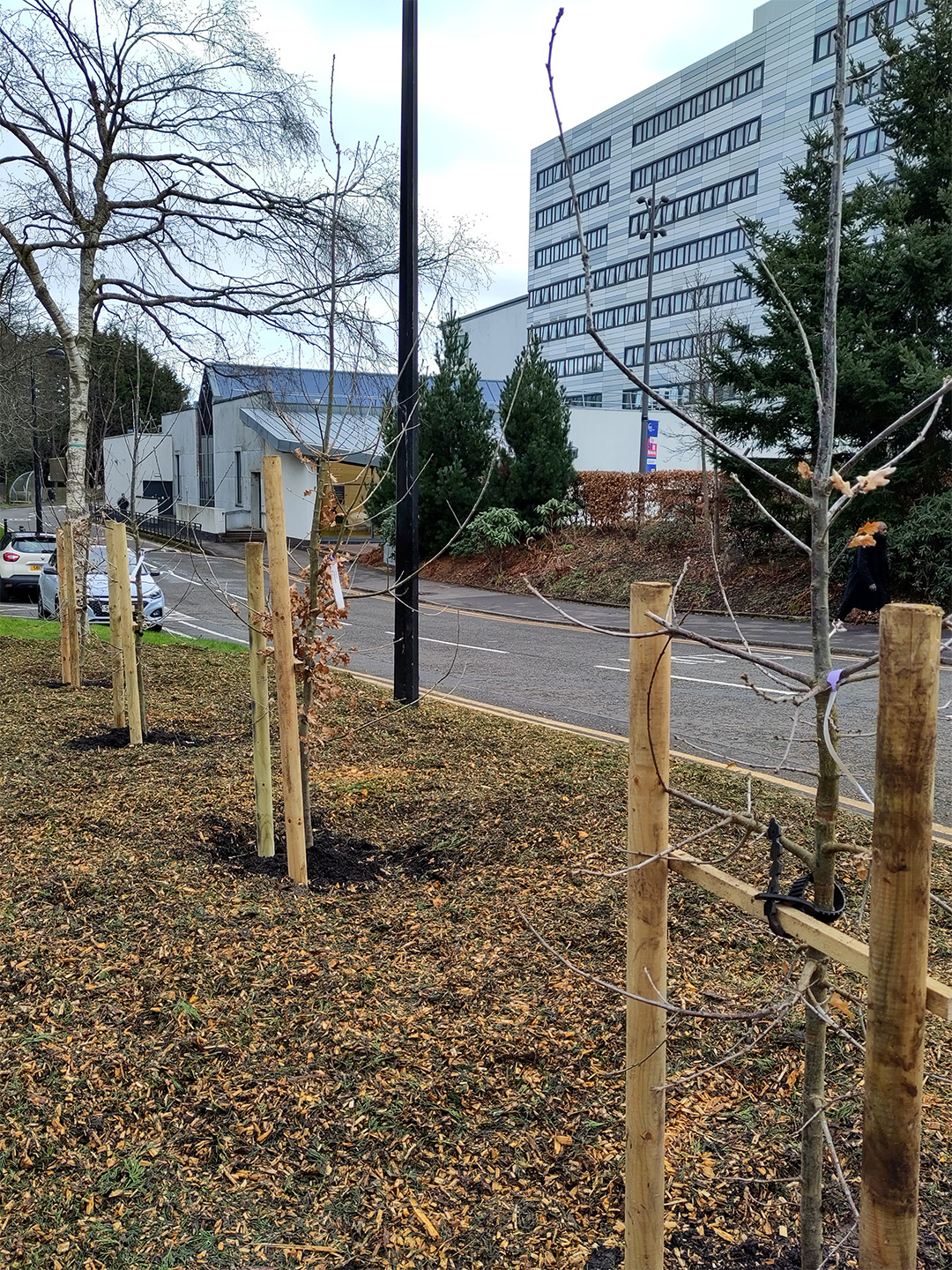Enhancing biodiversity on campus

As we move into Spring, the University’s grounds maintenance contractor has been busy working on a project that will enhance biodiversity on campus. The project involves planting a number of oak trees to provide a food source for Winter Moths caterpillars that are a crucial element of the diet of both Great Tits and Blue Tits.
Both Great and Blue Tits time the laying and incubation of their eggs to tie in with both reproduction, so the peak demand of their clutch matches the peak supply of the winter moth caterpillars.
Great and Blue Tits (see image below) are known to nest on campus and it is believed that the success rate of their chicks is limited by the absence of caterpillars due to the lack of any oak trees on campus/city centre.
Planting the trees will redress this and increase the prospects of both the Great and Blue Tits that make campus their home. You can read more about it in this article from the University of Glasgow.

To make space for the oak trees, the leylandii by the gatehouse were removed and have been replaced by a number of oak trees. The beech hedge, established two years ago along the University’s western perimeter, will also be extended and will provide a natural habitat for a variety of wildlife on campus.
In addition to their biodiversity value, the oak trees have a symbolic value because they are represented on both the University’s and Glasgow’s crests. Planting the oak trees also marks the beginning of preparations to celebrate the 150th anniversary of Queens’ College, one of the University’s founding institutions.
Replacing the leylandii with the beech hedge and oak trees are one of the deliverables of the University’s Biodiversity Plan (launched in 2023). Please visit the University’s sustainability pages for more information the Biodiversity Plan and to register for the Sustainability team’s newsletter.
